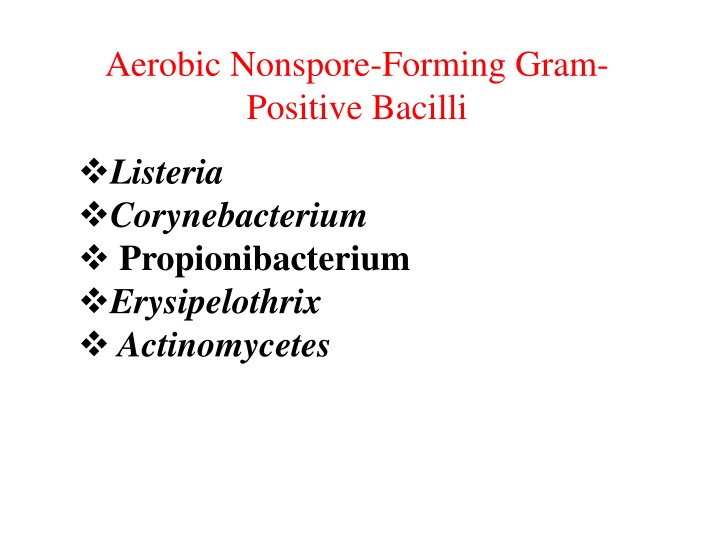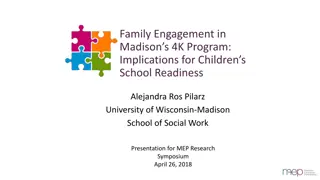
Menlo Elementary Family Engagement Plan
This plan outlines how Menlo Elementary aims to enhance family engagement to support student learning by fostering a strong partnership between the school, parents, and families. Through various activities and events, parents are encouraged to actively participate in their children's education both at school and at home.
Download Presentation

Please find below an Image/Link to download the presentation.
The content on the website is provided AS IS for your information and personal use only. It may not be sold, licensed, or shared on other websites without obtaining consent from the author. If you encounter any issues during the download, it is possible that the publisher has removed the file from their server.
You are allowed to download the files provided on this website for personal or commercial use, subject to the condition that they are used lawfully. All files are the property of their respective owners.
The content on the website is provided AS IS for your information and personal use only. It may not be sold, licensed, or shared on other websites without obtaining consent from the author.
E N D
Presentation Transcript
Aerobic Nonspore-Forming Gram- Positive Bacilli Listeria Corynebacterium Propionibacterium Erysipelothrix Actinomycetes
Genus: Corynebacterium Species: Corynebacterium diphtheriae Corynebacteria are 0.5 1 m in diameter and several micrometers long. Characteristically, they possess irregular swellings at one end that give them the "club-shaped appearance Irregularly distributed within the rod (often near the poles) are granules staining deeply with aniline dyes (metachromatic granules) that give the rod a beaded appearance. Individual corynebacteria in stained smears tend to lie parallel or at acute angles to one another.
Diphtheria bacilli are pleomorphic, non-capsulate, non-sporing Gram-positive rods Their morphology varies, even within one strain, depending on the age of the culture Typing of diphtheria bacilli: 1. Serotyping 2. Bacteriophage typing 3. Bacteriocin typing Possess three distinct antigens; 1. A deep-seated antigen 2. A heat-labile protein (K antigen) 3. A heat stable polysaccharide (O antigen)
Culture & Growth C diphtheriae and other corynebacteria grow aerobically on most ordinary laboratory media: * On Loeffler serum medium, Corynebacteria grow much more readily than other respiratory organisms * On blood agar, the C diphtheriae colonies are small, granular, and gray, with irregular edges, and may have small zones of hemolysis. * On agar containing potassium tellurite, the colonies are brown to black with a brown-black halo because the tellurite is reduced intracellularly (staphylococci and streptococci can also produce black colonies).
Three biotypes of C diphtheriae have been widely recognized: gravis: large colonies, grey-black, small zone of haemolysis mitis: smaller convex, grey-black soft colonies, small zone of Hae intermedius: the smallest grey-black colonies These variants have been classified on the basis of growth characteristics such as: * colony morphology * biochemical reactions, * and severity of disease produced by infection.
Pathogenesis C diphtheriae occurs in the respiratory tract, in wounds, or on the skin of infected persons or normal carriers. It is spread by droplets or by contact to susceptible individuals; the bacilli then grow on mucous membranes or in skin abrasions, and those that are toxigenic start producing toxin. * Invasion C. diphtheriae toxin : is a heat-labile polypeptide that can be lethal in a dose of 0.1 g/kg. It s in vitro production depends on: *Concentration of Iron *Osmotic pressure *Amino acid concentration *pH *Availability of suitable carbon and nitrogen sources * Toxigenesis
Pathogenesis In respiratory tract: Diphtheria toxin cause a grayish pseudomembrane over the tonsils, pharynx, or larynx. In wound or skin: Diphtheria occur in the tropics and the virulence of diphtheria bacilli is due to: *Capacity of establish infection *growing rapidly *Then quickly elaborating toxin that is effectively absorbed
Alberts stain Pseudomembrane over the tonsils A diphtheria skin lesion on the leg
Diagnosis and lab tests Swabs from the nose, throat, or other suspected lesions must be obtained before antimicrobial drugs are administered. Smears stained with alkaline methylene blue or Gram stain show beaded rods in typical arrangement. Specimens should be inoculated to a blood agar plate (to rule out hemolytic streptococci), a Loeffler slant, and a tellurite plate (eg, cystine-tellurite agar or modified Tinsdale's medium) Incubate at 37 C. In 12 18 hours, the Loeffler slant may yield organisms of typical "diphtheria-like" morphology. In 36 48 hours, the colonies on tellurite medium are sufficiently definite for recognition of C diphtheriae.
Diagnosis and lab tests. Cont C diphtheriae isolate should be subjected to testing for toxigenicity. there are several methods, as follows: Method 1: A filter paper disk containing antitoxin (10 IU/disk) is placed on an agar plate. The cultures to be tested for toxigenicity are spot innoculated 7 9 mm away from the disk. After 48 hours of incubation, the antitoxin diffusing from the paper disk has precipitated the toxin diffusing from toxigenic cultures and has resulted in precipitin bands between the disk and the bacterial growth. This is the modified Elek method described by the WHO Diphtheria Reference Unit.
Diagnosis and lab tests. Cont Method 2: Polymerase chain reaction-based methods have been described for detection of the diphtheria toxin gene (tox). PCR assays for tox can also be used directly on patient specimens before culture results are available. A positive culture confirms a positive PCR assay. A negative culture following antibiotic therapy along with a positive PCR assay suggests that the patient probably has diphtheria.
Diagnosis and lab tests. Cont 1. Enzyme-linked immunosorbent assays can be used to detect diphtheria toxin from clinical C diphtheriae isolates. 2. An immunochromographic strip assay allows detection of diphtheria toxin in a matter of hours. This assay is highly sensitive. 3. injecting two guinea pigs with the emulsified isolate
Treatment AntiMicrobial drugs (penicillin, erythromycin) inhibit the growth of diphtheria bacilli Early administration of specific antitoxin against the toxin formed by the organisms at their site of entry and multiplication.
Preventation & Immunization Active immunization in childhood with diphtheria toxoid yields antitoxin levels that are generally adequate until adulthood. Young adults should be given boosters of toxoid The principal aims of prevention are to limit the distribution of toxigenic diphtheria bacilli in the population and to maintain as high a level of active immunization as possible.
Toxoid preparation A filtrate of broth culture of a toxigenic strain is treated with 0.3% formalin and incubated at 37 C until toxicity has disappeared. This fluid toxoid is purified and standardized in flocculating units (Lf doses). Fluid toxoids prepared as above are adsorbed onto aluminum hydroxide or aluminum phosphate. This material remains longer in a depot after injection and is a better antigen. Such toxoids are commonly combined with tetanus toxoid (Td) and sometimes with pertussis vaccine (DPT or DaPT) as a single injection to be used in initial immunization of children






















